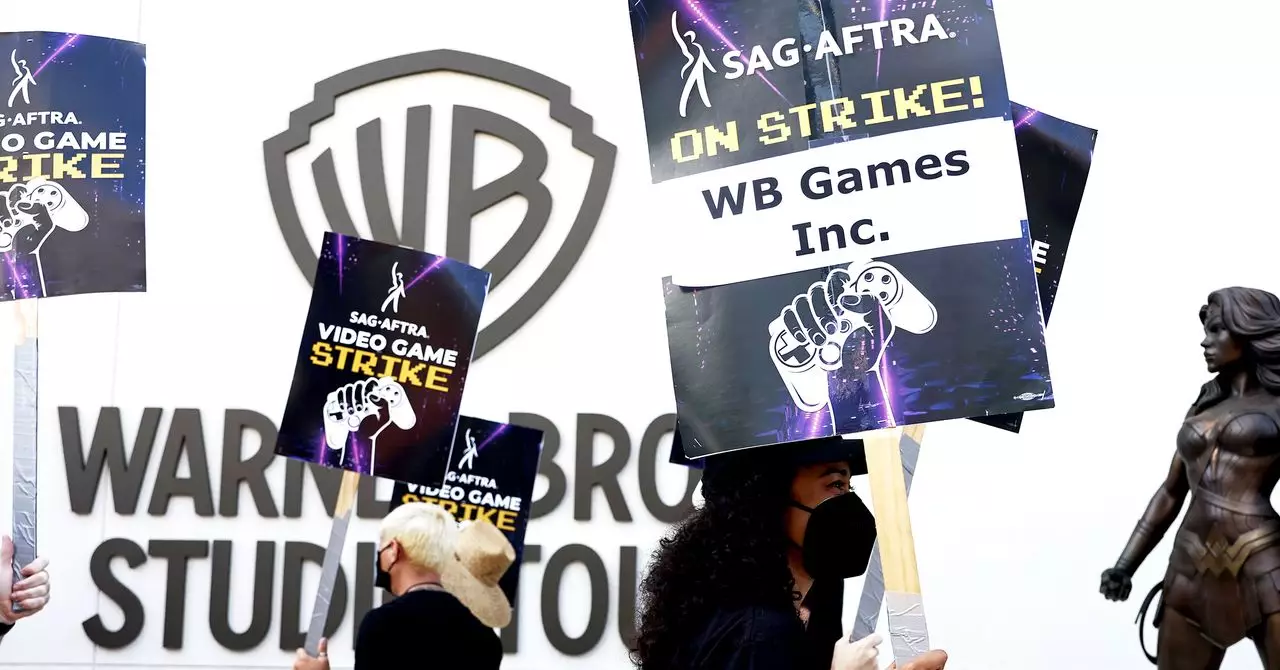The recent ratification of a transformative contract for video game performers marks a pivotal moment in the industry, signaling a deeper commitment to fairness, respect, and the preservation of artistic integrity amidst rapid technological advancements. With an overwhelming 95% approval, this agreement doesn’t merely settle contractual disputes; it sends a powerful message about valuing performers’ contributions in an era increasingly dominated by artificial intelligence. The victory encapsulates a shift toward recognizing performers as essential stakeholders rather than expendable assets, embedding protections that could redefine industry standards for years to come.
This contract addresses critical issues that have lingered beneath industry surface for years. Most notably, it mandates annual pay increases over the next three years—an acknowledgment of performers’ vital role and the necessity of equitable compensation. Yet, what stands out most is the robust stance against unchecked AI exploitation. The framework requires clear consent and disclosure when AI technology is used to replicate a performer’s voice or likeness. This legal safeguard is a direct response to the existential threat AI poses, not only to their livelihood but also to the core of creative authenticity.
The Heart of the Fight: Combating AI’s Erosion of Artistic Integrity
The strike and subsequent contract are rooted in genuine fears that AI might usurp human performers, stripping away the nuanced emotions, spontaneous creativity, and authenticity that professionals bring to their roles. Sarah Elmaleh’s observations underscore a sentiment echoed throughout the industry: AI’s infiltration predates popular AI tools like ChatGPT, and it’s seen as a fundamental threat to the artistic fabric of voice acting and motion capture performance. The industry’s digital transformation, once a promising frontier, increasingly feels like a minefield where performers’ rights are at stake.
The implications of AI encroachment extend beyond simple replacement. With actors’ voices and likenesses now fair game for AI replication, performers risk being digitally “recreated” without ongoing consent or compensation. Cases like the digital resurrection of James Earl Jones’s Darth Vader voice highlight how technology can be deployed without transparent negotiations, often leaving performers feeling powerless. The new contract’s clauses empower actors by establishing consent mechanisms and allowing suspensions of AI use if performers withdraw their approval. This is more than a contractual update; it’s a conscious effort to sustain the human element amidst technological temptations.
Shaping Industry Norms and Respecting Creative Legacies
The protections established by this agreement are not just technical or legal lines—they determine how the industry values human artistry versus digital facsimiles. For performers, these safeguards serve as a shield, ensuring their work is not exploited or commodified beyond their control. They affirm that a performer’s voice or image, whether alive or deceased, deserves respectful treatment—a stance that elevates the industry’s moral compass.
While some may view AI as an innovation that streamlines production or cuts costs, this contract boldly asserts that human talent must remain central. It implicitly challenges companies to balance technological progress with their ethical responsibilities. The industry’s quick response to incidents like the Fortnite Darth Vader AI mishap shows that performers are not willing to accept automation that can produce chaotic or offensive results without accountability. Instead, they demand structured negotiations, clear disclosures, and respect for their creative and personal rights.
In embracing this approach, the industry could pave the way for a model where technological innovation complements, rather than compromises, artistic integrity. This isn’t about resisting progress outright but about steering it responsibly—ensuring it enhances rather than erodes the very human soul that breathes life into digital worlds. As the lines between human performers and AI constructs blur, the challenge becomes: how do we honor the artistic legacy, protect individual rights, and foster innovation simultaneously? The new contract signifies a bold step forward, but ultimately, it’s an ongoing battle to keep human artistry at the core of digital entertainment.


Leave a Reply